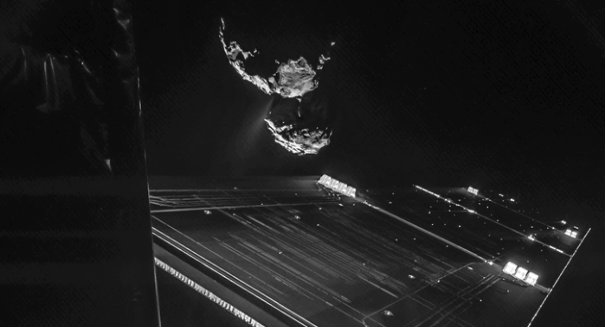
The European Space Agency hopes that their Rosetta Mission, which has successfully put a satellite in orbit around a comet, will give them more answers about their target Comet 67P.
The European Space Agency’s (ESA) Rosetta Mission, which existed to get a satellite into orbit around Comet 67P, is officially a success. This is the first time a satellite has successfully been put into orbit around a comet, and Science Times reports that scientists are already making great strides in studying the comet’s surface.
While there has been no contact with the surface just yet, the comet is being monitored from afar by ESA’s Rosetta’s Optical, Spectroscopic and Infrared Remote Imaging System. This system has been keeping careful track of the comet’s largely irregular surface, and will continue to do so for the next year. While this new information is very intriguing, the clue to understanding more about the comet comes from a pyramid boulder on its surface. This boulder, which has been nicknamed “Cheops” after the pyramids of Giza, is the currently the team’s primary focus.
Comet 67P is an unusual comet that is of interest due to its rocky and irregular surface. It also has a very unconditional makeup that scientists hope will be better understood through the monitoring of Cheops and other boulders on the comet’s surface. The ESA plans to land on the comets surface on November 12th, and Cheops will be a place of inspection once this landing takes place.
Not much is known about Comet 67P, but the icy rock will be carefully monitored as it moves closer to the sun during the next year. Scientists hope that during this time Cheops and other boulders will move and become more visible to the cameras. The ESA hopes their landing will give more answers into, not just the weight, size and density of the comet, but also into the actual composition. No answers are here just yet, but if the landing goes as smooth as the Rosetta Mission, they may be coming very soon.
Leave a Reply